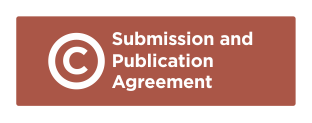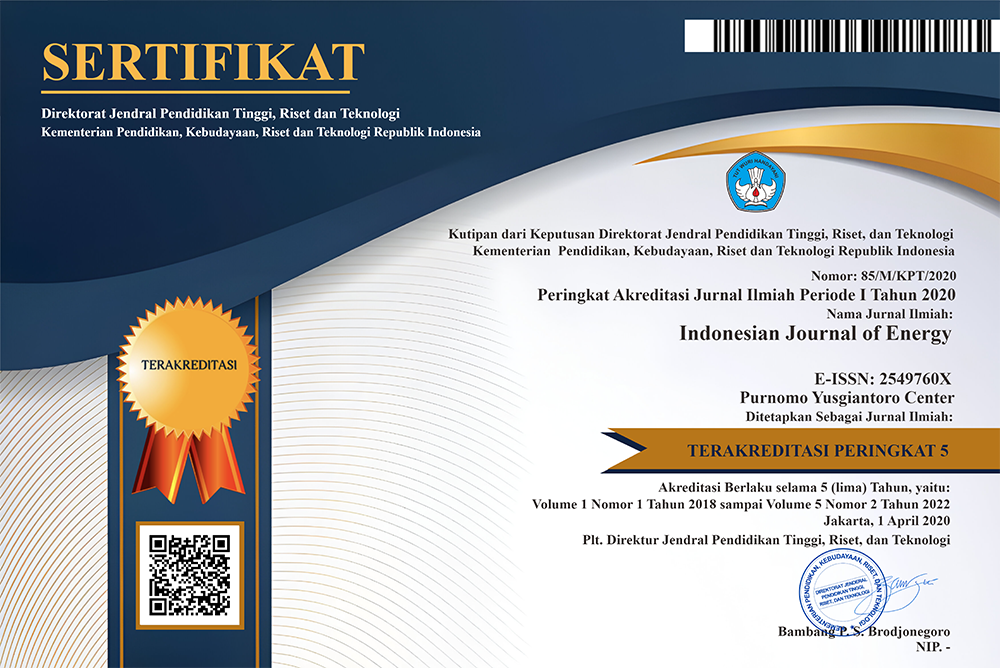Potential Development of Unconventional Oil and Gas Resources in Indonesia
Key Challenges and Future Prospects
Abstract
The demand for energy is increasing along with the rise in population. Indonesian people rely on conventional resources such as coal, oil, and natural gas to meet their energy needs. It is estimated that coal can only be exploited for up to 61 years, natural gas for 34 years, and oil for 19 years. Meanwhile, Indonesia possesses unconventional oil and gas resources (e.g., coal bed methane (CBM), tight gas, shale gas and oil, and methane hydrate), estimated to reach 1,800 trillion cubic feet (TCF). These resources are in the exploration stage and have yet to be fully exploited due to technological limitations. Nevertheless, the Indonesian government continues to emphasize the development of this type of energy resource. Therefore, this study conducts a review of the potential of unconventional oil and gas resources in Indonesia, covering characteristics, potential occurrences in Indonesia, exploitation methods, utilization as a source of energy, and opportunities and challenges in their application. The method used is a narrative review based on secondary data by examining papers published in reputable national and international journals in the last ten years. Results show that unconventional oil and gas resources have different characteristics, including permeability, porosity, and depth. CBM can be found at the shallowest depth, followed by tight gas, methane hydrate, and the deepest is shale gas. Potential occurrences of these resources in Indonesia include gas hydrate (858.2 TCF), then shale gas (574.07 TCF), coal-bed methane (453.3 TCF), and shale oil 11.24 million tons. Exploitation can be done in various ways, such as dewatering for CBM, hydraulic fracking for tight and shale, and depressurization for methane hydrate. Once exploited, methane gas can be used for power plants, vehicle fuel, and industrial and household needs. Opportunities and challenges from various aspects, as well as applicable laws in Indonesia, are also discussed. In this light, the contribution of our study is to provide a comprehensive review of the characteristics, location, exploitation methods, opportunities, and challenges of utilizing unconventional oil and gas resources in Indonesia.
Downloads
References
Agarwal, M., & Kudapa, V. (2023). Plasma based fracking in unconventional shale – A review. Materials Today: Proceedings, 72(6), 2791–2795.
Aguilera, R. (2016). Shale gas reservoirs: Theoretical, practical and research issues. Petroleum Research, 1(1), 10–26.
Akilu , S., Eswaran, P., & Sun, Z. (2021). A review of transport mechanisms and models for unconventional tight shale gas reservoir systems. International Journal of Heat and Mass Transfer, 175, 121125.
Bachrudin, A., Firmansyah, Y., & Sunardi, E. (2015). Studi awal identifikasi gas hidrat menggunakan metode seismik di lapangan YF, Selat Makassar. Seminar Nasional ke-II FTG Universitas Padjajaran. Universitas Padjajaran.
BPS. (2022). Statistik pertambangan minyak dan gas bumi 2017–2021. Badan Pusat Statistik.
BPS. (2023). Jumlah penduduk pertengahan tahun (ribu jiwa), 2021–2023. https://www.bps.go.id/indicator/12/1975/1/jumlah-penduduk-pertengahan-tahun.html
Colosimo, F., Thomas, R., & Lloyd, J. (2016). Biogenic methane in shale gas and coal bed methane: A review of current knowledge and gaps. International Journal of Coal Geology, 165, 106–120.
Feng, Y., Xiao, X., & Wang, E. (2023). Gas storage in shale pore system: A review of the mechanism, control and assessment. Petroleum Science.
Folger, P., Tiemann, M., & Bearden, D. (2016). The EPA draft report of groundwater contamination near Pavillion, Wyoming: Main findings and stakeholder responses. Congressional Research Service.
Gibbons, S., Heblich, S., & Timmins, C. (2021). Market tremors: Shale gas exploration, earthquakes, and their impact on house prices. Journal of Urban Economics, 122, 103313.
Green, M. (2014). Unconventional deposits. https://id.m.wikipedia.org/wiki/Berkas:%28Non%29
_Conventional_Deposits.svg
Hartiniati. (2011). Dampak lingkungan dan sosial dari pengembangan CBM di Indonesia. Jurnal Teknik Lingkungan, 12(2), 207–216.
Hayes, A. (2022). Shale oil: Overview, benefits and examples. Investopedia. https://www.investopedia.
com/terms/s/shaleoil.asp
Honeycutt, M. (2014). Air quality impacts of natural gas operations in Texas. In Health impact assessment of shale gas extraction: Workshop summary. National Academies Press.
IEA. (2023). World energy outlook 2022. International Energy Agency.
Indonesian Ministry of Energy and Mineral Resources. (2021). Potensi besar, gas metan hidrat jadi solusi energi bersih masa depan. https://www.esdm.go.id/id/media-center/arsip-berita/potensi-besar
-gas-metan-hidrat-jadi-solusi-energi-bersih-masa-depan
Indonesian Technology Assessment and Application Agency. (2020). Outlook energi Indonesia 2020.
Jarosławski , J., Pawlak, I., Guzikowski, J., & Pietruczuk, A. (2022). Impact of shale gas exploration and exploitation activities on the quality of ambient air—The case study of Wysin, Poland. Atmosphere, 13(8), 1228.
Jumiati, W., Maurich, D., & Wibowo, A. (2020). The development of non-conventional oil and gas in Indonesia: Case study pn hydrocarbon shale. Journal of Earth Energy Engineering, 9(1), 11–15.
Kementerian ESDM. (2022). Permen ESDM 35/2021: Tingkatkan investasi, pemerintah perbaiki proses bisnis penawaran wilayah kerja minyak dan gas bumi. https://migas.esdm.go.id/post/read/
permen-esdm-35-2021-tingkatkan-investasi-pemerintah-perbaiki-proses-bisnis-penawaran-wilayah-kerja-minyak-dan-gas-bumi
Kondori, J., Zendehboudi, S., & Hossa, M. (2017). A review on simulation of methane production from gas hydrate reservoirs: Molecular dynamics prospective. Journal of Petroleum Science and Engineering, 159, 754–772.
Li, X.-S., Wan, L.-H., & Li, G. (2008). Experimental investigation into the production behavior of methane hydrate in porous sediment with hot brine stimulation. Industrial & Engineering Chemistry Research, 47(23), 9696–9702.
Malagar, B., Lijith, K., & Singh, D. (2019). Formation & dissociation of methane gas hydrates in sediments: A critical review. Journal of Natural Gas Science and Engineering, 65, 168–184.
Mao , G., Lai , F., & Li, Z. (2020). Characteristics of pore structure of tight gas reservoir and its influence on fluid distribution during fracturing. Journal of Petroleum Science and Engineering, 193, 107360.
Mukherjee, M., & Misra, S. (2018). A review of experimental research on Enhanced Coal Bed Methane (ECBM) recovery via CO2 sequestration. Earth-Science Reviews, 179, 392–410.
Nelson, R., & Heo, J. (2020). Monitoring environmental parameters with oil and gas developments in the Permian Basin, USA. Environmental Research and Public Health, 17(11), 4026.
Niu , W., Lu , J., & Sun, Y. (2023). A review of the application of data-driven technology in shale gas production evaluation. Energy Reports, 10, 213–227.
Park, Y., Cha , M., & Cha, J.-H. (2008). Swapping carbon dioxide for complex gas hydrate structures. International Conference on Gas Hydrates (ICGH) 6th.University of British Columbia Library.
Skalak, K. J., Engle, M. A., Rowan E. L., Jolly, G. D., Conko, K. M., Benthem A. J., Kraemer, T. F. (2014) Surface disposal of produced waters in western and southwestern Pennsylvania: Potential for accumulation of alkali-earth elements in sediments. (2014). International Journal of Coal Geology, 126(1), 162–170.
Stevens, S., & Hadiyanto. (2004). Indonesia: Coalbed methane indicators and basin evaluation. SPE Asia Pacific Oil and Gas Conference and Exhibition. SPE International.
Suharyati, Pratiwi, N., & Pambudi, S. (2023). Outlook energi Indonesia 2022. Sekretariat Jenderal Dewan Energi Nasional.
Triarso, E., & Troa,, R. (2017). Indikasi keberadaan gas hidrat pada Cekungan Busur Muka Simeulue dan potensinya sebagai sumber energi masa depan. Jurnal Kelautan Nasional, 11(3), 127–140.
Tverberg, G. (2011). Natural gas: The squeeze at the bottom of the resource triangle. Our Finite World. https://ourfiniteworld.com/2011/08/28/natural-gas-the-squeeze-at-the-bottom-of-the-resource-triangle/
U.S. Energy Information Administration. (2021). Electric power sector CO2 emissions drop as generation mix shifts from coal to natural gas. Today in Energy. https://www.eia.gov/
todayinenergy/detail.php?id=48296
U.S. Energy Information Administration. (2021). Natural gas explained. Today in Energy. https://
www.eia.gov/energyexplained/natural-gas/
Wirandoko, H., Wahyuzar, D., & Sia, B. (2021). Indikasi potensi gas hidrat sebagai sumber energi nonkonvensional. Indonesian Journal of Earth Sciences, 1(1), 36–48.
Wu, T., Pan , Z., & Connell, L. (2020). Gas breakthrough pressure of tight rocks: A review of experimental methods and data. Journal of Natural Gas Science and Engineering, 81, 103408.
Xue, L., Dai, C., Wang, L., & Chen, X. (2019). Analysis of thermal stimulation to enhance shale gas recovery through a novel conceptual model. Geofluids, 4084356, 1–14.
You, K., Flemings, P., Collett, T., Malinvero, A., & Darnell, K. (2019). Mechanisms of methane hydrate formation in geological systems. Reviews of Geophysics, 57(4), 1146–1196.
Zhang, J., Niu, Y., & Chen, J. (2022). Research on deep coalbed methane localized spotting and efficient permeability enhancement technology. Journal Applied Sciences, 12(22), 11843.
Zhang, R., Li, H., & Khanna, N. (2023). Air quality impacts of shale gas development in Pennsylvania. Journal of the Association of Environmental and Resource Economists, 10(2), 447–486.
Zhao, W., Hu, S., & Hou, L. (2020). Types and resource potential of continental shale oil in China and its boundary with tight oil. Petroleum Exploration and Development, 47(1), 1–11.














